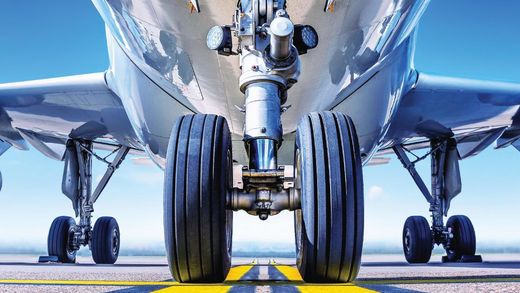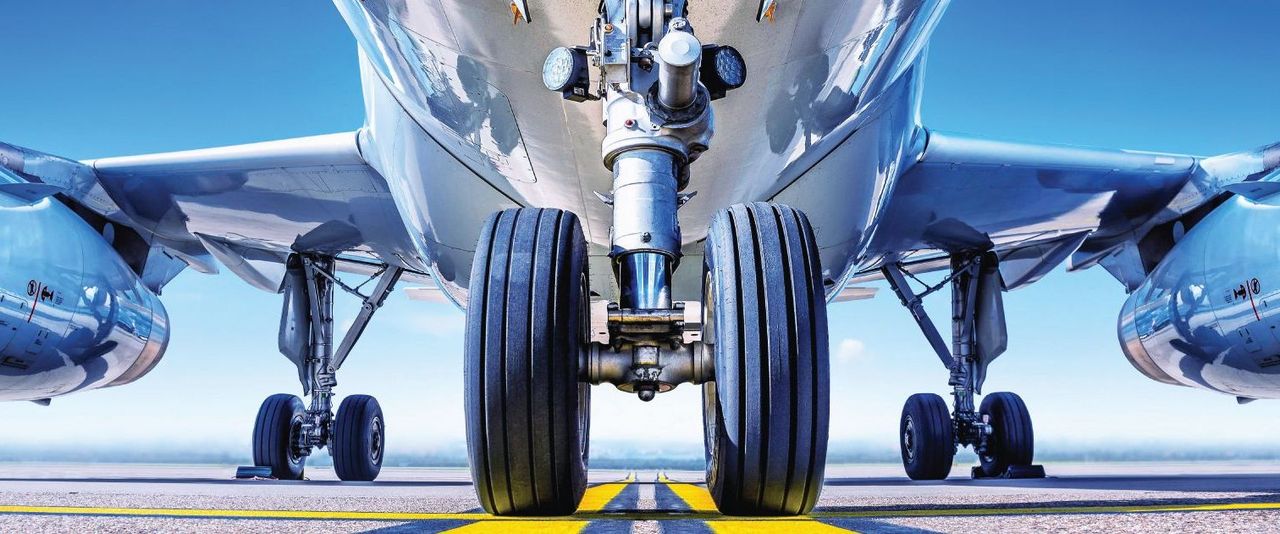Aerospace: Cylindrical Grinding Makes Maximum Precision in Components Possible.
Extreme precision, rigidity, vibration damping, and temperature stability. This is what cylindrical grinding machines that produce workpieces for the aerospace industry must be capable of. This is the only way to guarantee repeatability from one part to the next. Process reliability and stability are of key importance for aerospace components – when grinding HVOF-coated landing gear cylinders and pump housings as well as when match-grinding spools to control valve bodies.
Materials for aerospace components can vary from high-temperature resistant nickel alloys to hard-coated aluminum alloys. They must all be temperature stable and be able to withstand the heat on the ground and also the extremely low temperatures at an altitude of 32,000 feet (10,000 m).
Such materials are often difficult to machine using conventional methods, which is why they are ground. In many cases, grinding is more cost-effective than hard turning, especially when the costs for the cutting tool and the tool life are taken into account. One example of this is HVOF-coated landing gear components. HVOF-coated cylinders and other landing gear components are normally ground with diamond wheels that require special dressing methods. For these parts, aerospace manufacturers pre-grind the surfaces and then coat them with the HVOF coating. Only then do they finish-grind the parts to their final dimensions. This ensures that the coating has an even thickness.
Workpieces, parts, componentsIt's a fact: the less the parts are handled, the more precise they are. Cylindrical grinding machines with internal and external cylindrical grinding functions offer a clear advantage here. They allow for multiple operations to be performed in a single clamping.
Additional benefits: Users can grind components beyond just aerospace applications on cylindrical grinding machines with internal and external cylindrical grinding functions. They can also process non-circular internal forms such as squares or hexagons as long as the smallest diameter of the form is larger than the radius of the internal grinding wheel. However, these operations require cylindrical grinding machines with a large swing diameter.
Tensile Specimens for Accurate Surface Finishes and Final Tolerances
A key application of cylindrical grinding in aerospace is the production of contoured tensile specimens. These are square pieces cut out of any component from the raw castings or other materials. Aerospace customers send these tensile testers to UNITED GRINDING. We grind the workpiece into a defined shape, the users then use the test specimen to determine the tensile strength, yield or yield point, and ductility of materials. In this way, we support users from the aerospace industry in achieving the desired surface and/or thread forms as well as surface finishes and final tolerances with cylindrical grinding.
In this process UNITED GRINDING also defines the machining parameters, such as the grinding wheel grit, feed rates, and other parameters, to ensure a repeatable process. For tensile testers that need to be threaded at both ends, grinding is more cost-effective than conventional machining methods.
Match Grinding: Better with an Automated Cylindrical Grinding Process
Match grinding of components such as valves, plungers, spools, and sleeves, and other hydraulic components for the aerospace industry is a critical and demanding cylindrical grinding operation. In match grinding, the external diameter of a part is ground to match and slide into the bore of the corresponding component. To achieve the correct flow rate. These parts are often also ground with chamfers.
Why is grinding these parts so difficult? Because the tolerances of the parts are normally within 1 micron (0.00004"). The same applies to the roundness and straightness of the parts. UNITED GRINDING recommends automating the cylindrical grinding process to meet these strict requirements.
Cylindrical grinding of Curved Teeth of End Couplings
For the production of aerospace components, cylindrical grinding machine is also used for grinding curved tooth forms of face couplings. These special forms are ground into the faces of shafts, such as jet engine turbine shafts. Cup wheels are used on cylindrical grinding machines to create these forms. In addition, the grinding machine must be able to grind above and below the centerline of the Z-axis and to index precisely along the C axis. The machine grinds one side of the curved coupling tooth form, above and below the centerline, then indexes the workpiece in the C axis for the next, and so on until the whole coupling around the workpiece face is completed. The grinding machine must produce perfect tooth shapes and pitch tolerances as well as maintain the programmed pitch over the entire workpiece diameter.
Cylindrical Grinding Machines with Precision
STUDER offers a wide range of cylindrical grinding machines for aerospace applications. The S41, S31, S33, and favorit models provide the machining flexibility, precision, rigidity, and temperature stability required for stable, consistent, and repeatable production operations.













